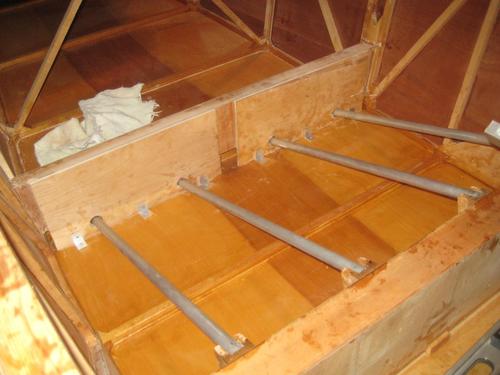Bellyboard
Bellyboard
Recently a KR pilot whose AS 5048 wing is set at one degree angle of incidence told me that the lesser angle of incidence allowed the nose of his airplane to ride pretty high on approach. The limited visibility on approach led him to install a belly-board on his plane. The belly-board enabled him to maintain constant speed at a steeper approach angle, and improved visibility on landing. This is what finally led me to go ahead and stick a belly-board on my plane, even though originally I had planned not to.
Below, you'll see that I'm following Mark Jones' approach. The 1/4" thick birch plywood panels are epoxied to the front face of the rear spar. The panels drop down from the bottom of the spar to the floor of the fuselage, providing a strong structure to which the belly-board can attach.
Six 1/8" thick "L" brackets made of extruded 6061-T6 aluminum angle have been pre-drilled to attach to the plywood panels. An extruded piano hinge will be bolted to the bottom of the fuselage, up through these brackets. My aluminum belly-board will then be attached to the hinge by solid rivets. The belly-board will be actuated by an automatic linear actuator mounted behind the seat.
